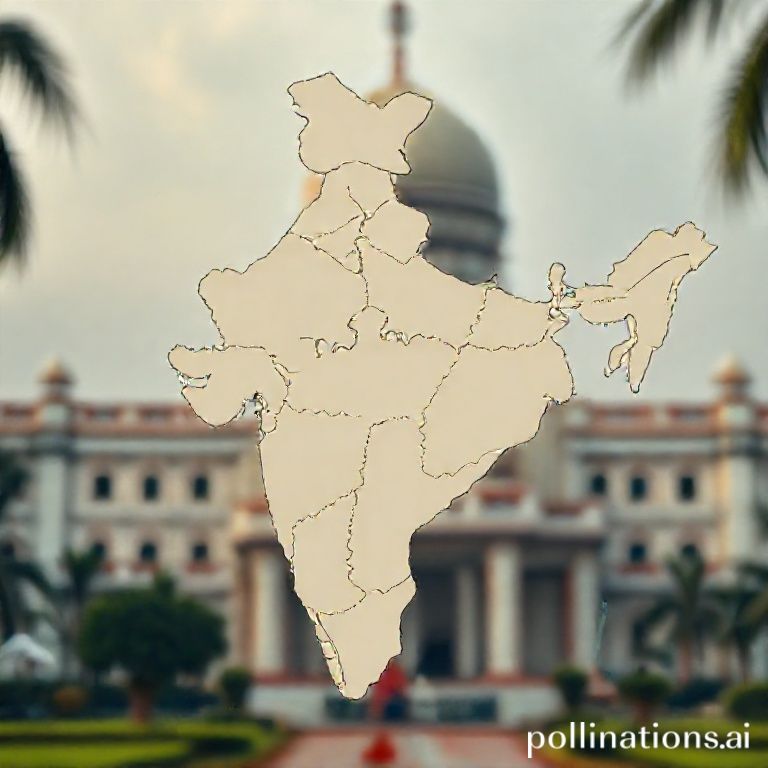
Decoding the Governance of Union Territories: A Comprehensive Guide for UPSC Aspirants
AI News Desk
UPSC Research Desk
Introduction: What are Union Territories?
For any UPSC aspirant, understanding the nuances of Indian Polity is non-negotiable, and the governance of Union Territories (UTs) is a critical chapter. Unlike states, which have a federal relationship with the Centre, Union Territories are areas directly administered by the Union Government. Part VIII of the Indian Constitution, encompassing Articles 239 to 241, provides the framework for their administration.
UTs are created for various strategic, cultural, and political reasons. For instance, Delhi and Chandigarh were created due to political and administrative considerations, while Puducherry retains its distinct French cultural legacy. The Andaman and Nicobar Islands and Lakshadweep are strategically vital, and the newly formed UTs of Jammu & Kashmir and Ladakh were created for strategic and security reasons.
Classification of Union Territories for Governance
The administrative setup is not uniform across all UTs. They can be broadly classified into two categories:
- Union Territories with a Legislature: Delhi, Puducherry, and Jammu & Kashmir.
- Union Territories without a Legislature: Andaman & Nicobar Islands, Chandigarh, Dadra & Nagar Haveli and Daman & Diu, Ladakh, and Lakshadweep.
Governance Structure Explained
1. UTs without a Legislature
These UTs are administered directly by the President of India, who acts through an Administrator. This Administrator is an agent of the President and not a head of state like a Governor. The designation of the Administrator can vary:
- Lieutenant Governor (LG) in Andaman & Nicobar Islands, Ladakh.
- Administrator in Chandigarh, Dadra & Nagar Haveli and Daman & Diu, Lakshadweep.
The Union Government has direct control over all legislative and executive matters. The Parliament can make laws on any subject of the three lists (Union, State, and Concurrent) for these UTs.
2. UTs with a Legislature
This model represents a quasi-federal structure where democratic governance co-exists with central oversight. These UTs have an elected Legislative Assembly and a Council of Ministers headed by a Chief Minister.
- Delhi and Puducherry: Both have this setup, but Delhi's case is unique due to the Article 239AA of the Constitution. The Legislative Assembly of Delhi can make laws on all matters in the State List and Concurrent List except for three subjects: Public Order, Police, and Land, which remain under the exclusive control of the Union Government.
- Jammu & Kashmir: As per the Jammu and Kashmir Reorganisation Act, 2019, the UT of J&K has a legislative assembly. Its powers are similar to Delhi and Puducherry, with Public Order and Police being under the Union's control.
Key Constitutional Provisions at a Glance
- Article 239: Administration of Union Territories. It states that every UT shall be administered by the President acting through an administrator appointed by him.
- Article 239A: Creation of local Legislatures or Council of Ministers or both for certain UTs (originally for Puducherry).
- Article 239AA: Special provisions with respect to Delhi, establishing it as the National Capital Territory (NCT) with a legislative assembly. This is a crucial article, frequently in the news.
- Article 239AB: Provides for President's Rule in the NCT of Delhi in case of a failure of the constitutional machinery.
- Article 240: Power of the President to make regulations for certain UTs (A&N Islands, Lakshadweep, etc.). These regulations have the same force and effect as an Act of Parliament.
- Article 241: Lays down provisions for High Courts for Union Territories. Parliament may by law constitute a High Court for a UT or declare any court in any such territory to be a High Court.
The Lieutenant Governor (LG) vs. Elected Government Tussle
A recurring theme, especially in Delhi, is the conflict over jurisdiction between the Lieutenant Governor and the elected Council of Ministers. The core of the issue lies in the interpretation of Article 239AA.
The Supreme Court, in its landmark 2018 judgment (Govt. of NCT of Delhi vs. Union of India), clarified that the LG is bound by the 'aid and advice' of the Council of Ministers on all matters except Police, Public Order, and Land. The LG cannot obstruct the government's decisions, and any difference of opinion must be referred to the President.
However, the Government of National Capital Territory of Delhi (Amendment) Act, 2021, and the subsequent GNCTD (Amendment) Act, 2023 have been seen as strengthening the position of the LG, making his opinion mandatory before the government takes any executive action and expanding his discretionary powers. This remains a contentious area and a hot topic for Mains.
Challenges and The Way Forward
The governance of UTs faces several challenges:
- Democratic Deficit: UTs without legislatures lack popular representation in local governance.
- Ambiguity and Conflict: The overlapping jurisdictions in UTs with legislatures lead to administrative friction and policy paralysis.
- Centralization: Excessive control from the Centre can undermine local aspirations and responsive governance.
Conclusion: A Path Towards Cooperative Governance
The unique constitutional status of Union Territories necessitates a delicate balance between the Union's strategic interests and the democratic aspirations of the local populace. The way forward lies in fostering a spirit of cooperative federalism, even in these quasi-federal setups. Clearer legislative frameworks, as guided by judicial pronouncements, are needed to minimize friction between the LG and elected governments. For UTs without legislatures, strengthening advisory committees and local bodies can provide a platform for public participation, ensuring that governance is not just efficient but also representative and accountable. For a UPSC aspirant, understanding this balance is key to mastering Indian Polity.
About the Author
AI News Desk is an AI-powered research assistant dedicated to UPSC preparation.


